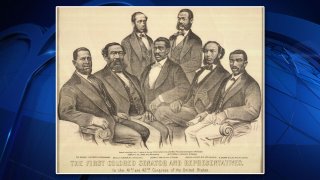
For Bernard and Shirley Kinsey, what started as an art collection turned into a crusade to illuminate the entire story of African American history. The result is the groundbreaking exhibition, The Kinsey African American Art & History Collection, now on view through March 1 at the African American Museum, Dallas, in Fair Park.
When the Kinseys married in 1967, their goal was to visit 100 countries. During their travels, they began collecting art and artifacts. Their travels inspired a curiosity about their own heritage and the lesser known chapters of history. The couple worked at Xerox and used her salary to acquire paintings, sculptures, photos, rare books, letters and manuscripts.
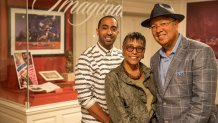
The collection is considered one of the most comprehensive surveys of African American history and culture outside the Smithsonian Institution. The exhibition has been touring since 2007, visiting 30 cities in the US and internationally and attracting more than 15 million visitors. At the African American Museum, nearly 200 pieces fill three galleries. It is only a portion of the collection and Kinseys are still adding to their holdings. The collection is a family affair: the couple’s son, Khalil B. Kinsey, now acts as the collection’s general manager and curator.
Organized chronologically, the exhibition focuses on the African American experience, combining historical documents and artifacts with art to explore African American history. “The documents and the artifacts show us a lot of African American history we’re actually unaware of because we’re not going to find it in the textbooks,” Dr. W. Marvin Dulaney said. Dr. Dulaney is a retired Associate Professor of History Emeritus at the University of Texas-Arlington who serves as an education programs advisor, volunteer trainer and docent at the museum.
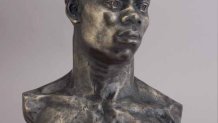
(Photo of #070 Jackson Slave Boy) 2019 marked the 400th anniversary of enslaved Africans arriving in Jamestown, Virginia. In the first gallery, a marriage license and a baptism record issued in St. Augustine, Florida in the late 16th century tells a different story about Africans living in America. “The documents from St. Augustine and the Spanish colonies showing that we were her before 1619 is just wonderful evidence to refute the notion that African Americans came here as slaves and that’s how our history starts here - in slavery - when in reality it doesn’t because one of those documents is a marriage license for free Africans in St. Augustine,” Dulaney said.
Entertainment
The exhibition includes detailed evidence of slavery in America, including an inventory of slaves, their age and how they were valued. Pages from the newspaper Charleston Mercury feature common advertisements. “Along with property being sold, it lists the selling of human beings, like a field hand. It shows they advertised the selling of people,” Dulaney said.
A weathered copy of the Dred Scott decision sits near a display of Confederate currency featuring slaves. “One of the things it shows is how the Confederacy valued slaves. They put them on their currency showing what was indeed the foundation and basis of their wealth and here you see the slaves working,” Dulaney said.
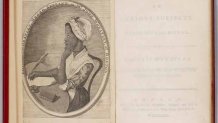
A 1872 photo of the first African Americans in Congress shows the progress African Americans made after the Civil War. A bust of Frederick Douglass, an 1853 copy of Solomon’s Northup’s 12 Years a Slave and a 1773 first edition copy of poems by Phillis Wheatley pay tribute to the artistic output of African Americans.
The Civil Rights movement is well-documented with a program from the 1963 March on Washington and evidence of Woolworth store boycotts. A 1942 newspaper article about Bernard Kinsey’s father reveals another aspect of the Civil Rights movement. “The newspaper clipping of his father fighting segregated education in Florida tells you a story that the Civil Rights movement didn’t just start in 1954,” Dulaney said.
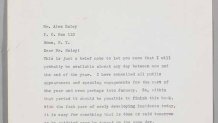
A letter Malcolm X wrote to Alex Haley as Haley worked with the activist on his autobiography gives insight into their relationship. “Seeing the actual letter documents that this process had actually taken place and shows us what Malcolm X thought about what was going on between the two of them,” Dulaney said.
The art in the exhibition shows African Americans’ value and contribution the art world and society at large. Striking photographs of people living and working in Harlem in the 1920s and 1930s amplify the art and literature of the Harlem Renaissance. The Kinseys also commission African American artists. “One of the things the Kinseys did was also encourage artists. They had Jonathan Green come to their house and do this piece,” Dulaney said. “It represents where he grew up in South Carolina.”
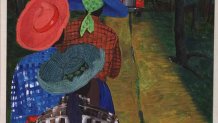
Through art and historical artifacts, the exhibition sheds new light on African American history. “It shows that the African American story still has not been told completely, fully, comprehensively or accurately,” Dulaney said. “The Kinsey Collection corrects the record for us and enhances that record and tells us all of these stories we don’t normally hear in American history books.”
Learn more: http://www.aamdallas.org/index.html



